Learning how to sport climb is a very exciting milestone in a climber’s journey. It is commonly the next step after a climber becomes accustomed to top roping and is ready to go to the next level.
Some climbing purists like to refer to sport and lead climbing as “real climbing”. Personally, I feel like this is degrading to bouldering and top roping. I believe that everyone’s climbing experience should be what they want it to be and should not be pressured by outside forces.
The transition to sport climbing is a serious undertaking and should not be taken lightly. The security of having the top rope at all times in no longer there. While this may not seem like a big deal at first, it can be pretty big thing to get your mind wrapped around and be confident with. In addition to this, sport climbing requires better climbing technique and body position than top roping.
In an effort to ease this transition for you, this article provides you with a complete step-by-step guide that will walk you through what I believe to be the best/easiest way to get into sport climbing.
The best way to start sport climbing is detailed step-by-step below.
1. Determine If You Are Ready To Start Sport Climbing
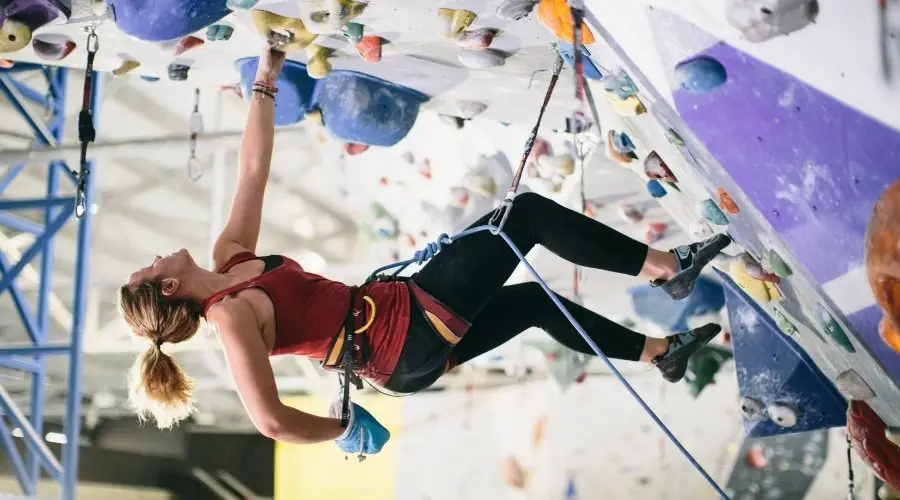
The very first step is to determine if you are actually ready to start sport climbing. I wrote an entire article discussing this topic. If you are second guessing if you are ready to make the transition, I highly recommend taking a quick look at it (linked here).
As a general rule, you are ready to start sport climbing if you are mentally prepared, have consistent top rope experience (on manual belay), and can consistently climb 5.10b.
The above statement is general best practice to start sport climbing. Some climbers have sport climbed outside within their very first couple sessions. While this is possible, I do not recommend doing this unless you have an extremely experienced outdoor sport climber walking you through every step.
For the majority of climbers, especially ones somewhat new along their climbing journey, will not have a climbing mentor like this yet. For those, and even ones with a mentor, I recommend starting in step 2.
2. Take A Sport Climbing Class
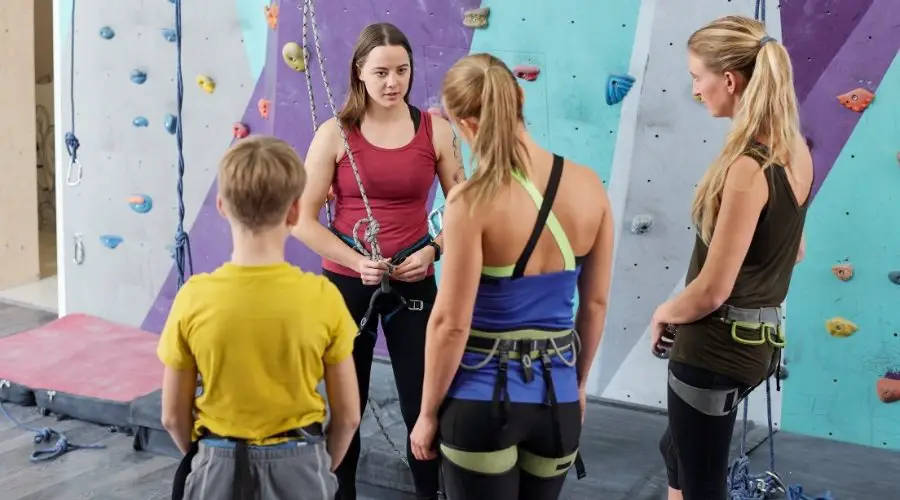
Most climbing gyms will offer classes with a certified instructor that will teach you everything you need to know about sport climbing. I highly recommend attending one of these classes and learning from people who are actually trained to teach you how to do this.
While the teachings and advice of other experienced sport climbers may be helpful in your learning process, it is generally best to learn the proper way to do things in the beginning. There are climbers out there who take short cuts and do things improperly because that is the way they have been taught. This can be dangerous and they may not even know it is.
Always learn how to do things the right way first and go from there.
Learning to sport climb in an indoor gym will be the best setting to do so in. This is because gyms provide a more regulated and safer environment than outside i.e. they have pre-set bolts, the bolts are closer together at regular intervals, and there are typically no potentially dangerous landing zones. In addition to this, sport climbing outside typically requires climbers to have knowledge of both setting up and cleaning anchors.
For these reasons, I believe learning how to sport climb indoors and being initially taught by a certified instructor is the best route to go.
3. Practice Different Clipping Techniques
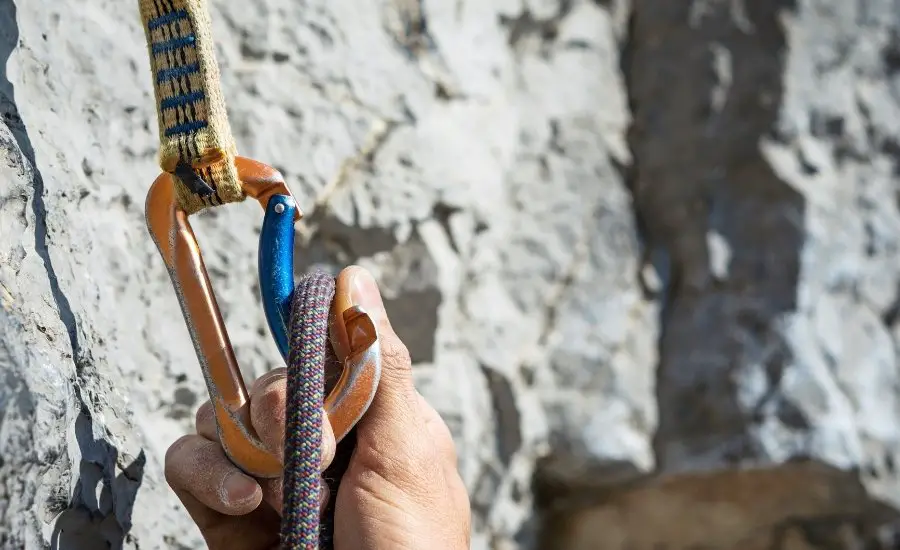
Now that you have learned the basics of sport climbing, it is time to start practicing how ot clip. Becoming comfortable with different clipping techniques with both hands will allow you to be more focused on climbing than clipping.
Getting good at clipping and finding the right position to do so in is integral in becoming a good sport climber. If you are interested in the best way to practice clipping and want 3 ideas to practice at home, check out my article here.
If you are in need of getting a few draws to practice with, you can check out the current price of the most popular sets on Amazon here!
4. Practice By Mock Leading
A great way to try out and practice what you have learned is to mock lead. Mock leading is basically top roping with an extra couple steps. The YouTube video above shows mock leading on auto-belay. You can do it on auto or manual belay, whichever your prefer.
To do it, you will set up and tie in normally just like every other time you have top roped. This time however, you will tie a second rope in to your harness. This rope you will take up with you as you climb and clip it in as you go (just like you would do for sport climbing).
Mock leading allows you to practice the clipping, technique, and rope management of sport climbing while maintaining the security of top roping. This helps you build confidence and familiarity in the process and eases the transition from top rope to sport.
I recommend to do this a few times to make sure you are 100% comfortable with the process of sport climbing before taking the lead test.
5. Become Comfortable Falling on Lead
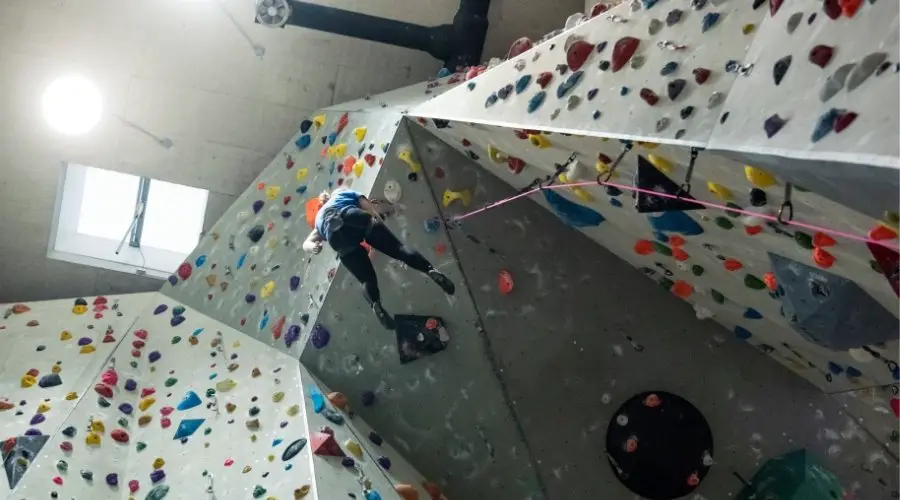
Taking a fall while sport climbing is a bit different than on top rope. You will generally be falling from above your last clip and this can be scary for a lot of climbers.
A good way to become comfortable with this is to sport climb up an easy route (well within your capabilities) on lead with a very experienced sport climber or a certified gym staff member on belay. Then once you are a few clips up, communicate you are falling and let go of the route.
For additional ways to get over your fear of falling on lead and an in-depth guide showing you how to do this step-by-step, check out my article linked here.
6. Become Lead Certified
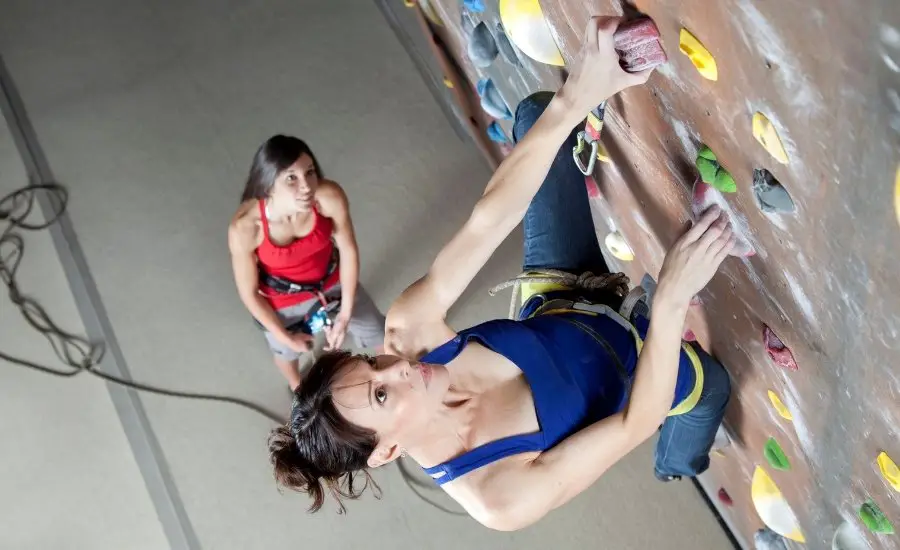
Next step: pass the test. Most climbing gyms will require you to pass a lead certification test in order to sport climb their walls. The lead certification test will test your sport climbing skills, knowledge, and belay ability.
The gyms require this test to make sure that climbers are capable and ready to sport climb safely. If you have completed the previous steps, then you should be confident, comfortable, and ready to smash this.
7. Find a Sport Climbing Mentor

While this step is optional, it will really help you out. Having an experienced climbing mentor who you trust is so valuable.
Experienced mentors will help you along your climbing journey and share valuable insights with you. This can be anything for giving technique tips, practice ideas, gear reviews, or cool spots to climb.
In addition to this, they can stop you from making the same mistakes they did along their climbing journey. Everyone makes mistakes and by learning from other’s, you will be able to progress faster along your journey.
8. Start Sport Climbing Routes

Now that you have passed your test, it is time to start getting those valuable reps in. Starting on routes that are below your current skill level will allow you to primarily focus on the safety aspects of sport climbing and get more and more comfortable with it.
Working your way up to harder routes will allow you to build on these skills and get you more comfortable with your physical abilities.
Finding a consistent and reliable climbing partner during this process is essential. The more sessions you spend the with same partner, the more comfortable and confident you will be on the wall. In addition to this, they may become a climbing buddy to go with you outside.
9. Get Your Own Gear
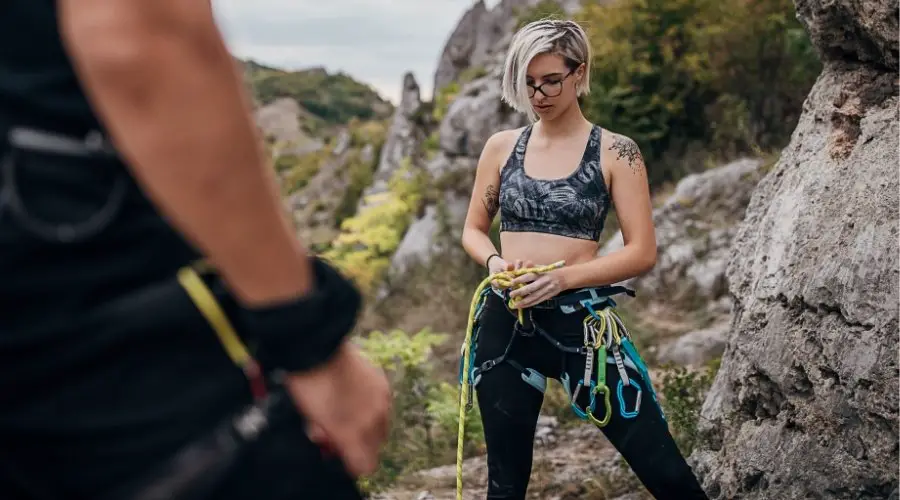
If you have gotten this far and want to start sport climbing outside, it is time to get your own gear (if you don’t have it already).
Typically for sport climbing outside you will want the following gear items:
Check out my recommended gear page that talks about what gear I feel to be the best bang for your buck.
If you have the gear and are ready to go, just be sure to go with your climbing mentor or another experienced outdoor sport climber your first few times out the crag. There are other crucial aspects to outdoor sport climbing not discussed in this article that are integral to keeping yourself safe and unharmed. Do not go alone and do not go unprepared.
